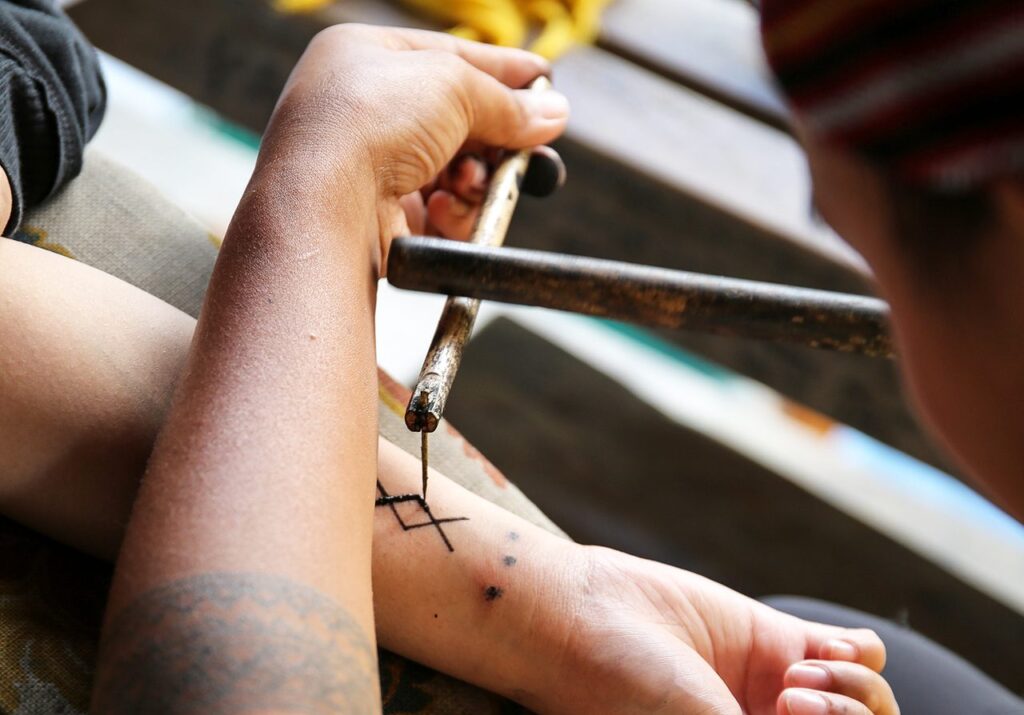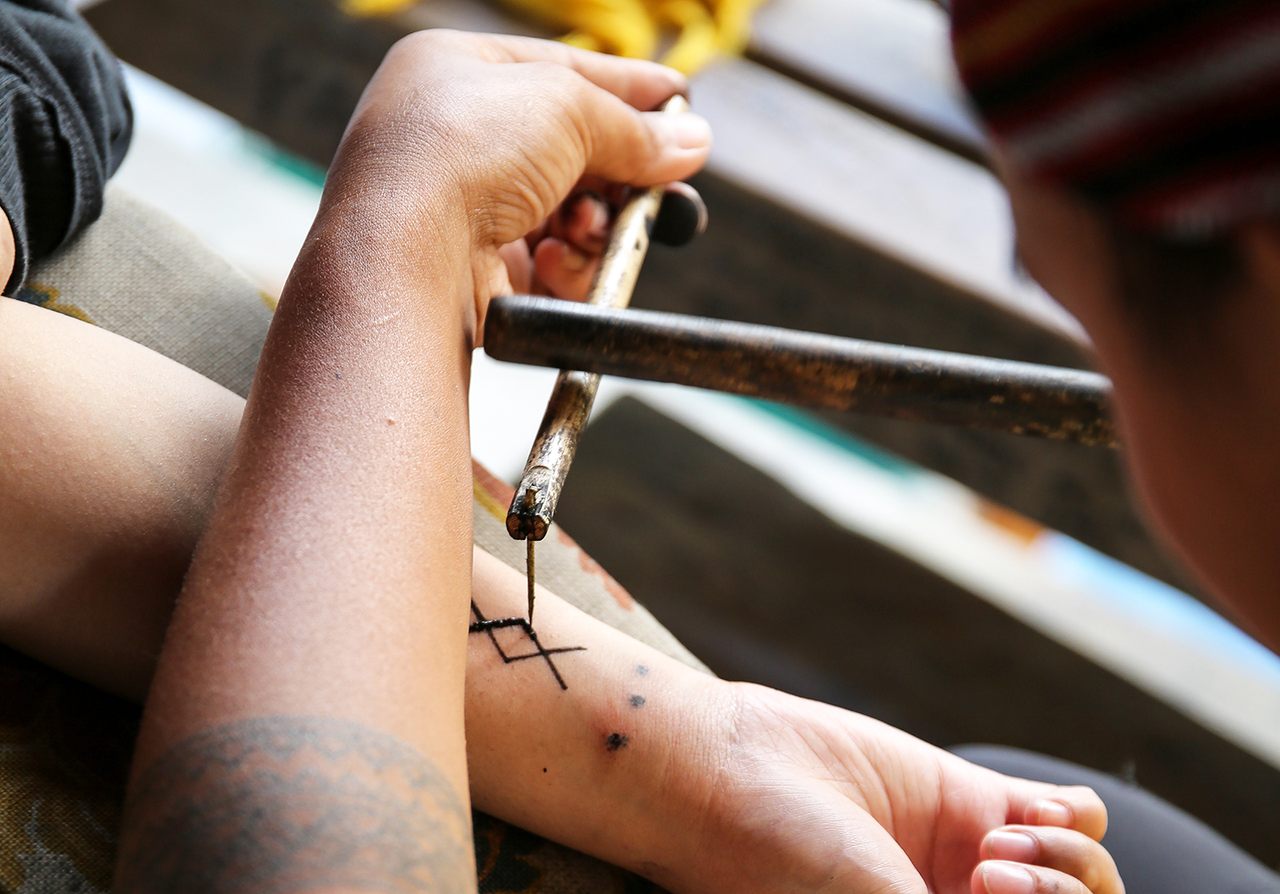
Mastering Hand Tattooing Techniques: A Comprehensive Guide
Hand tattoos, once relegated to the fringes of the tattooing world, have surged in popularity, becoming a mainstream form of self-expression. However, the unique anatomy and visibility of the hands demand specialized hand tattooing techniques. This comprehensive guide explores the nuances of tattooing hands, covering essential techniques, safety considerations, and aftercare practices to ensure a successful and lasting piece of art.
Understanding the Anatomy and Challenges of Hand Tattooing
The hands present several challenges that differ significantly from tattooing other body parts. Firstly, the skin on the hands is thinner and contains fewer layers of fat compared to areas like the arms or legs. This means the needle depth must be carefully controlled to avoid blowouts or premature fading. Secondly, the hands are constantly in motion and subjected to friction, sunlight, and frequent washing, all of which can impact the longevity and appearance of the tattoo.
Furthermore, the presence of bones and tendons close to the surface requires a meticulous approach. Tattoo artists must be acutely aware of the underlying anatomy to avoid causing unnecessary pain or damage. The knuckles, in particular, are notoriously difficult due to the skin’s elasticity and proximity to bone.
Essential Hand Tattooing Techniques
Needle Selection and Configuration
Choosing the right needle is crucial for achieving the desired outcome. Round liner needles are commonly used for fine lines and intricate details, while magnum shaders are preferred for filling larger areas with color or shading. The size and configuration of the needles should be carefully considered based on the design and the artist’s experience.
For delicate hand tattooing techniques, many artists favor using smaller needle groupings to minimize trauma to the skin. This approach allows for greater precision and control, particularly when working on sensitive areas like the knuckles and fingers.
Stretching the Skin
Proper skin stretching is paramount for creating clean, crisp lines and preventing ink from spreading. The artist must use their non-dominant hand to gently stretch the skin, providing a stable and taut surface for tattooing. This technique is especially important on the hands, where the skin tends to be more mobile.
Effective stretching also helps to minimize pain and discomfort for the client. By keeping the skin taut, the needle can penetrate more smoothly, reducing the likelihood of tearing or dragging.
Needle Depth and Angle
Controlling the needle depth and angle is essential for achieving optimal ink saturation and preventing blowouts. The needle should penetrate just deep enough to deposit the ink into the dermis layer of the skin. Going too deep can cause the ink to spread, resulting in a blurred or faded appearance. Conversely, not going deep enough will cause the ink to reject and fade quickly.
The angle at which the needle enters the skin also plays a crucial role. A slight angle, typically between 45 and 60 degrees, allows for smoother ink flow and reduces the risk of damaging the surrounding tissue. Experimentation and practice are key to mastering this aspect of hand tattooing techniques.
Hand Movement and Control
Precise hand movement and control are fundamental to creating high-quality hand tattoos. The artist must maintain a steady hand and use smooth, controlled strokes to deposit the ink evenly. Using a stable surface or a hand rest can help to minimize tremors and improve accuracy.
Developing a consistent tattooing motion is crucial for achieving uniform lines and shading. Practice on synthetic skin or other mediums can help artists refine their technique and build muscle memory.
Safety Considerations for Hand Tattooing
Safety should always be the top priority when performing any tattoo, but it’s especially important when dealing with the hands. The hands are exposed to a variety of germs and bacteria, making them more susceptible to infection. Strict adherence to hygiene protocols is essential for preventing complications.
Sterilization and Sanitation
All equipment used for tattooing, including needles, tubes, and grips, must be properly sterilized in an autoclave. The work area should be thoroughly cleaned and disinfected before and after each tattoo. Single-use gloves should be worn at all times and changed frequently.
Proper sanitation practices also extend to the client. The artist should thoroughly cleanse the area to be tattooed with an antiseptic solution before beginning the procedure. The client should also be instructed to wash their hands thoroughly before and after the tattoo session.
Cross-Contamination Prevention
Preventing cross-contamination is crucial for protecting both the artist and the client from bloodborne pathogens. The artist should avoid touching any surfaces or objects that are not sterile while tattooing. Barriers, such as plastic wrap or disposable covers, should be used to protect equipment and surfaces from contamination.
Sharps containers should be readily available for the safe disposal of used needles and other sharps. Proper handling and disposal of contaminated waste are essential for preventing the spread of infectious diseases.
Allergic Reactions
Although rare, allergic reactions to tattoo ink can occur. Artists should be aware of the potential symptoms of an allergic reaction, such as itching, swelling, or redness, and be prepared to take appropriate action. It’s always a good idea to ask clients about any known allergies before starting the tattoo.
Aftercare for Hand Tattoos
Proper aftercare is crucial for ensuring the longevity and appearance of a hand tattoo. The hands are constantly exposed to the elements, making them more prone to infection and fading. Clients must be diligent about following aftercare instructions to prevent complications.
Cleaning and Moisturizing
The tattoo should be gently cleaned with mild soap and water several times a day. Avoid using harsh soaps or abrasive scrubs, as these can irritate the skin and damage the tattoo. After cleaning, the tattoo should be patted dry with a clean towel and moisturized with a fragrance-free lotion.
Keeping the tattoo moisturized is essential for preventing dryness and cracking. Dry skin can lead to itching and irritation, which can increase the risk of infection. Apply a thin layer of lotion several times a day, especially after washing the hands.
Sun Protection
Sun exposure can cause tattoo ink to fade and damage the skin. Hand tattoos are particularly vulnerable to sun damage due to their constant exposure. Clients should apply a broad-spectrum sunscreen with an SPF of 30 or higher to the tattoo whenever they are outdoors.
Consider wearing gloves or protective clothing to shield the tattoo from the sun during prolonged outdoor activities. Sun protection is crucial for maintaining the vibrancy and longevity of the tattoo.
Avoiding Friction and Irritation
Friction and irritation can damage the tattoo and increase the risk of infection. Clients should avoid wearing tight gloves or clothing that rubs against the tattoo. Activities that involve excessive hand washing or exposure to harsh chemicals should also be minimized.
If the tattoo becomes irritated or infected, seek medical attention immediately. Early treatment can help to prevent complications and ensure proper healing.
Advanced Hand Tattooing Techniques
Working with Limited Space
Hand tattoos often involve working with limited space, especially on fingers and knuckles. Artists must be adept at creating intricate designs that fit within these constraints. Using stencils and careful planning are essential for ensuring that the tattoo looks balanced and aesthetically pleasing.
Consider the natural contours of the hand when designing the tattoo. Designs that flow with the shape of the hand tend to look more harmonious and visually appealing.
Color Selection and Placement
Choosing the right colors and placing them strategically can enhance the overall impact of a hand tattoo. Bold, vibrant colors tend to stand out more, while softer hues can create a more subtle effect. Consider the client’s skin tone and personal preferences when selecting colors.
Placement is also crucial. Avoid placing delicate or intricate designs on areas that are prone to friction or wear, such as the palms or the sides of the fingers. These areas tend to fade more quickly and may require more frequent touch-ups. Mastering these hand tattooing techniques is crucial.
Cover-Ups and Reworks
Hand tattoos are sometimes prone to fading or blurring, which may necessitate cover-ups or reworks. Artists must be skilled at assessing the existing tattoo and developing a strategy for improving its appearance. This may involve adding new elements, deepening the colors, or completely redesigning the tattoo.
Cover-ups can be challenging, especially on the hands, where space is limited. Careful planning and execution are essential for achieving a successful outcome.
The Future of Hand Tattooing
As hand tattooing techniques continue to evolve, we can expect to see even more intricate and innovative designs emerge. The increasing popularity of hand tattoos is driving artists to push the boundaries of creativity and develop new methods for achieving lasting and visually stunning results. [See also: Tattoo Aftercare: The Ultimate Guide] [See also: Choosing the Right Tattoo Artist] [See also: The History of Tattooing]
With proper training, technique, and aftercare, hand tattoos can be a beautiful and enduring form of self-expression. Whether you’re an experienced artist or a client considering getting a hand tattoo, understanding the nuances of this art form is essential for achieving a successful and satisfying outcome. The future of hand tattooing techniques looks bright, promising even more creative and innovative designs.

